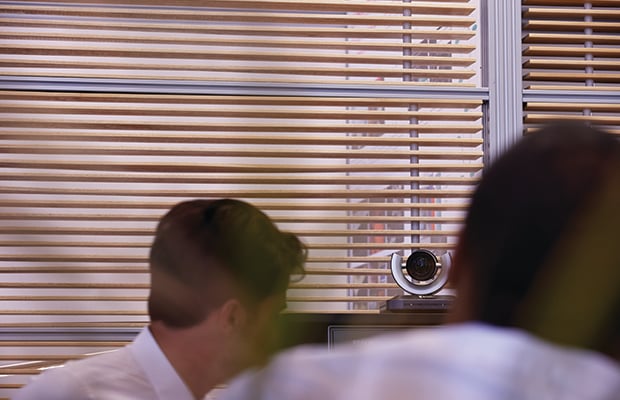It is no secret that the world of work has changed beyond recognition over the last couple of decades. As innovations in technology continue to transform our working practices, the way in which we work has changed too. Our office spaces, designed for the days in which every employee was expected to work at their desks from nine until five everyday, are often out-of-date and unresponsive to these altered working habits.
 The technological advancements that have brought so much change to the way in which we are using our workplaces have also brought some solutions for designers and architects. A range of workplace management technologies now exist to provide hard evidence on office utilisation, which show in great detail how occupants are using their space. Using this evidence, designers can create offices that are responsive to how people want to use them.
The technological advancements that have brought so much change to the way in which we are using our workplaces have also brought some solutions for designers and architects. A range of workplace management technologies now exist to provide hard evidence on office utilisation, which show in great detail how occupants are using their space. Using this evidence, designers can create offices that are responsive to how people want to use them.
Another blog that you may like: “It’s all about the layout!”
Sensor technology, for instance, is a tool which can provide great insight when reconceiving an office space. For instance, when companies have used this technology to collect evidence of desk use, they have found that desks are occupied sometimes as little as 25-35 per cent of the time. Based on evidence of this kind, designers and architects are able to make informed decisions about the number of desks an office needs.
This is particularly important in a world of flexible working, as unused desk spaces are cumbersome and costly for businesses to maintain. Further, a design which frees up unused desks can reallocate space towards collaborative uses, creating more breakout spaces and meeting rooms, for instance. Creating a space which is responsive to the activities of employees has ultimate business benefits, since it boosts collaboration, employee engagement, and reduces friction between employees and the office space they inhabit.
The ultimate end of workplace design is to create a space that is optimised for use. In the past, this may have simply consisted of a one-time project to design a space that was based on the preferences of its current occupants. Now, however, workplace technology has developed to the extent that designers and architects can create an intelligent space that is capable of interacting with its current and future occupants on a day-by-day basis.
For instance, room management systems which release a booked room if no one shows up ensure that a building will always operate to its full potential. Beyond the initial data-set they provide to designers, occupancy sensors can be set up to communicate directly with employees through an app or push notification, alerting them to a free desk or meeting room nearby. Integrating intelligent solutions such as these into an office design can make an office future-proof in a way which has not previously been possible.